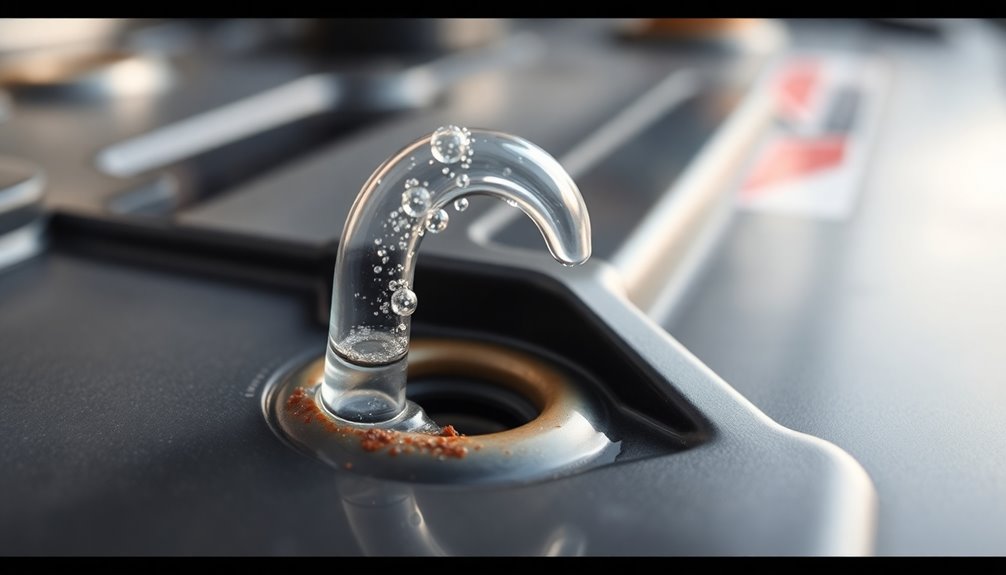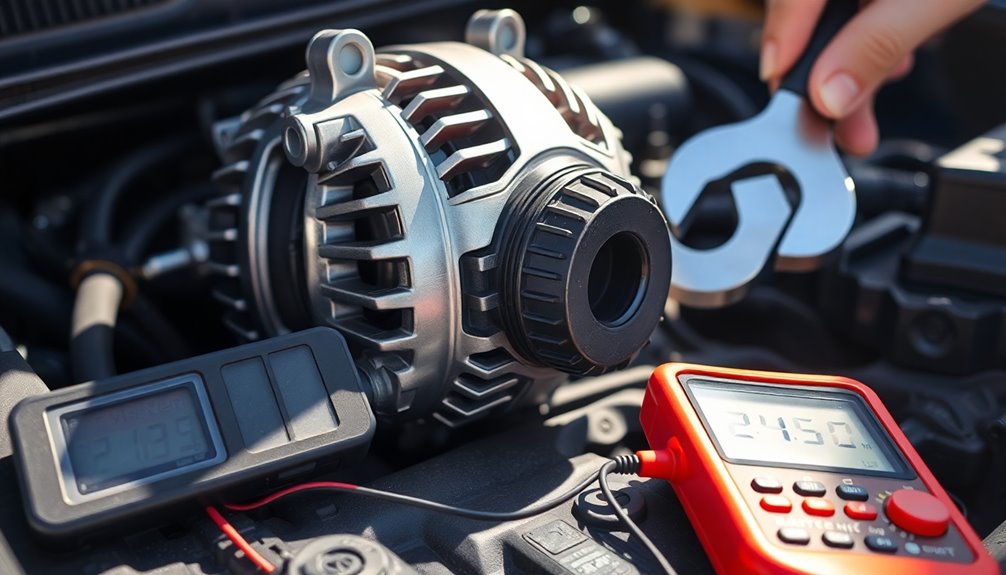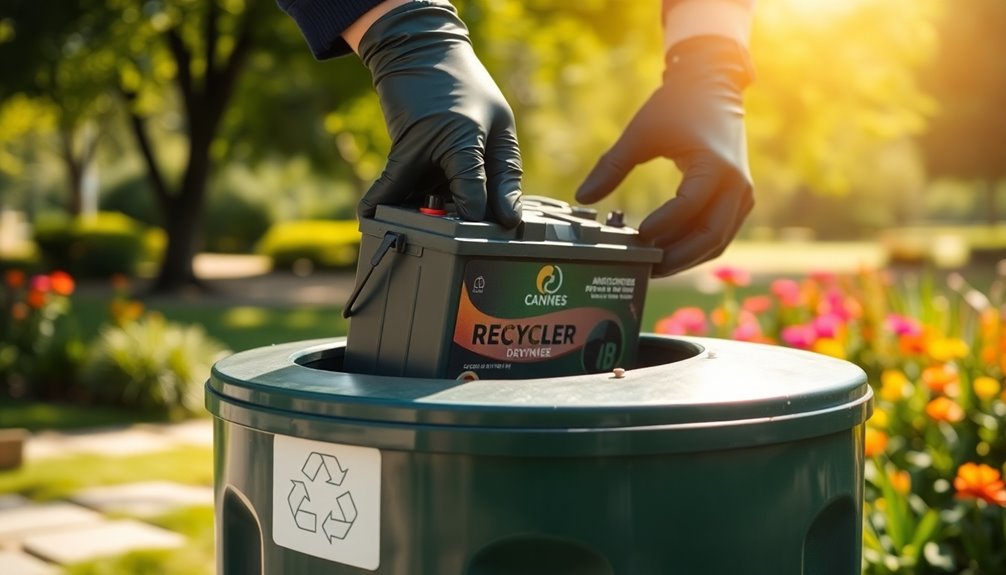A battery vent tube is essential for your battery's health as it directs harmful gases, like hydrogen, safely out of enclosed spaces in your vehicle. This prevents gas buildup, which can lead to dangerous situations like swelling or explosions, especially during overcharging. By allowing proper airflow, these tubes help reduce lead plate corrosion, prolonging battery life and maintaining charge capacity. It's crucial to regularly check your venting system for blockages or damage to ensure optimal function. Understanding the full importance of this component can help you safeguard your vehicle's battery and enhance its performance.
Key Takeaways
- Battery vent tubes direct harmful hydrogen gas outside the vehicle, preventing dangerous gas buildup in closed compartments.
- Proper venting reduces the risk of battery swelling and explosions during overcharging by maintaining safe internal pressure.
- Effective venting prolongs battery life by minimizing lead plate corrosion and preserving charge capacity.
- Regular maintenance and inspections of vent tubes are essential to ensure optimal functionality and safety.
- Neglecting venting can lead to health risks and severe battery failures, making vent tubes crucial for battery health.
Function of Battery Vent Tubes
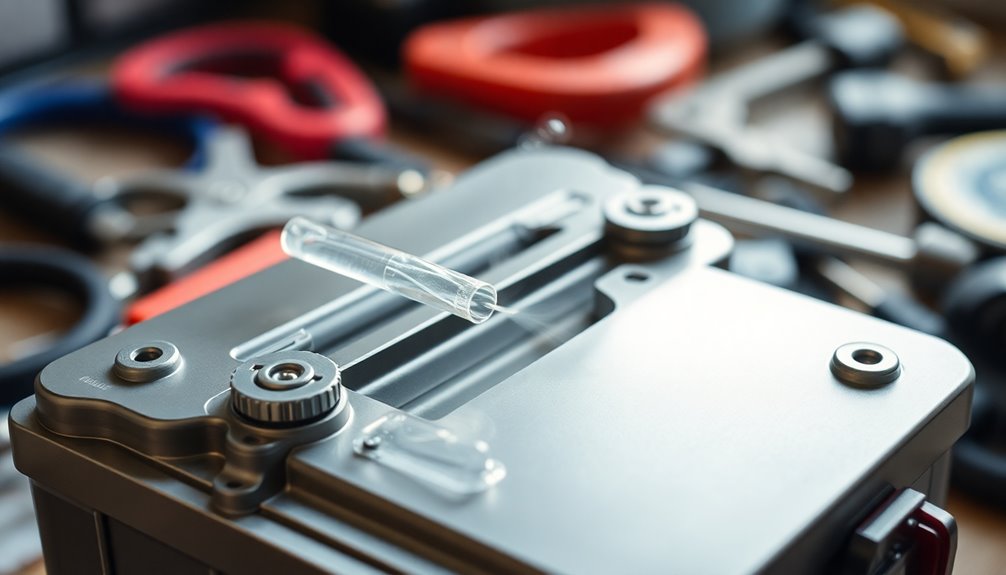
Battery vent tubes play a crucial role in ensuring the safety and longevity of your vehicle's battery. They prevent dangerous gas buildup by directing hydrogen gas produced during the battery charging process outside your vehicle. Without proper venting, this gas can accumulate, leading to potential damage or even explosions.
You might notice swelling, odd odors, excessive heat, or fluid leaks if gas buildup occurs. Moreover, vent tubes are essential for safety, particularly if your battery's in a closed compartment like the trunk or cabin. Failure to vent can pose serious health risks, as inhaling toxic gases can be hazardous. Proper installation is key—make sure the vent tube is connected correctly to effectively release gases outside.
Maintaining battery health is another vital function of vent tubes. They help dissipate heat from chemical reactions, ensuring your battery remains stable and effective. Venting is necessary for batteries located in closed compartments to prevent buildup of harmful gases.
Regularly check your vent tubes for clogs or damage, as this can significantly impact your battery's performance. By ensuring proper venting, you're not only protecting your vehicle but also prolonging the lifespan of your battery.
Types of Venting Systems

Understanding the various types of venting systems is essential for optimizing battery performance and safety. The two main systems are dual-stage venting systems and reversible metallic quick-venting systems.
Dual-stage venting systems feature pressure equalization through a porous ePTFE membrane during normal operation. They also include emergency venting, which allows for rapid gas release during thermal runaway. These systems protect against contaminants and come in various venting mechanisms, suitable for electric and hybrid vehicles. Additionally, these systems provide immediate pressure relief during critical thermal events.
On the other hand, reversible metallic quick-venting systems have an adjustable pressure range, providing efficient ventilation at different flow rates. They can release gases quickly during emergencies and have water resistance features. Installation flexibility allows for both inside and outside setups.
You'll also find active and passive venting systems. Passive venting manages gradual temperature and pressure changes, while active venting responds quickly to thermal runaway situations.
General venting mechanisms release hydrogen gas, aid in heat dissipation, and reduce moisture within the battery pack, ensuring longevity and safety. Each type plays a crucial role in maintaining battery integrity, so understanding these systems is vital for effective battery management.
Importance for Battery Health
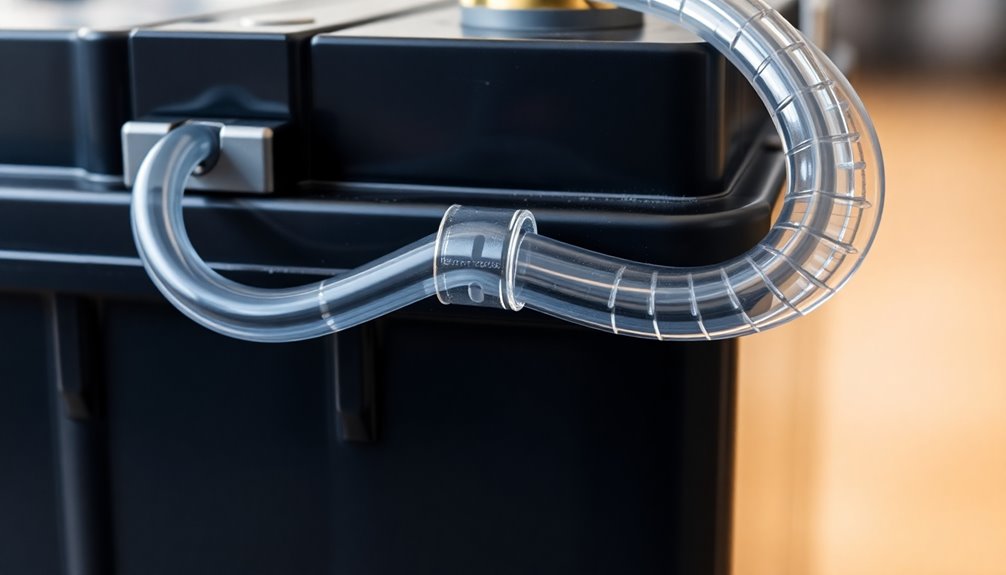
Proper venting is crucial for maintaining battery health and ensuring safety. During charging, batteries produce hydrogen gas, which can accumulate and cause damage if not managed properly. This gas buildup can lead to swelling or bloating of the battery, increasing the risk of flammable and toxic conditions. A vent tube directs this gas outside the vehicle, significantly reducing these risks.
Moreover, venting prevents the potential for explosions. Hydrogen gas can become explosive under pressure, especially during overcharging. By ensuring that gas is released outside, vent tubes mitigate this danger, keeping internal pressure within safe limits. In some cases, the absence of venting can pose a greater risk if the battery is improperly maintained.
Additionally, effective venting helps maintain the battery's ability to hold a charge, reducing corrosion of lead plates and extending battery life. It's essential to perform regular checks on your venting system to confirm it's functioning correctly. Proper venting not only prevents leaks and fluid damage but also ensures the battery operates within safe temperature ranges.
Ultimately, neglecting to vent can lead to severe consequences, including health risks from inhaling toxic gases and potential explosions. Keeping your vent tube in good condition is vital for both your battery's performance and your safety.
Applications and Vehicles
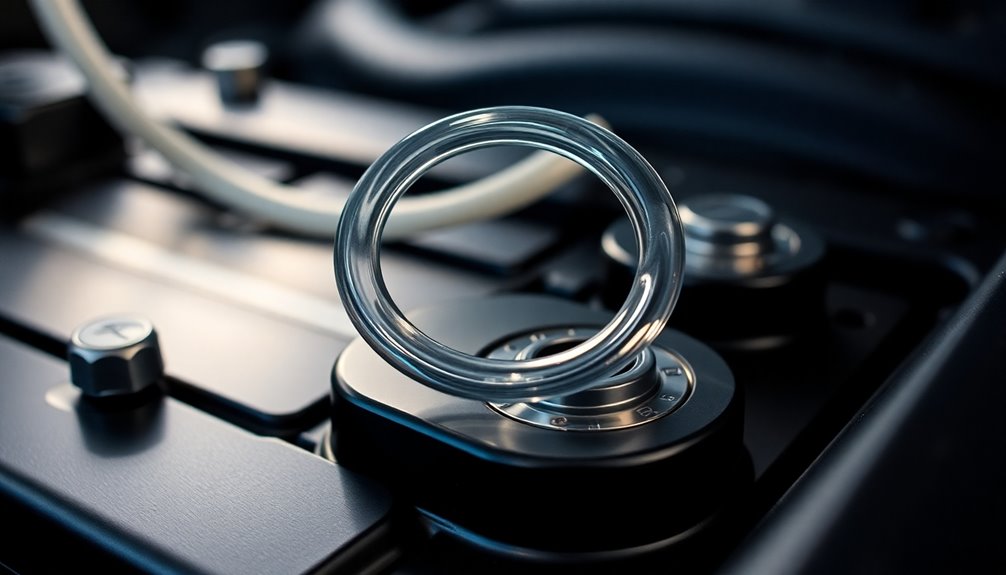
Maintaining battery health involves addressing the specific applications and vehicles that require effective venting solutions. If your vehicle has a battery located in a sealed compartment—like the trunk or passenger area—vent tubes are essential. These tubes direct harmful gases outside, preventing dangerous buildup that could lead to health risks or even explosions. Proper venting is crucial to prevent gas accumulation, reducing explosion risk.
For instance, models like the Saturn Ion and '02 Thunderbird necessitate proper venting to keep corrosive gases away from sensitive metal components.
Different battery types, including AGM, Flooded Lead Acid, and lithium-ion, produce gases that also require venting. Even batteries labeled as "unvented" have emergency relief mechanisms to handle gas release.
In RVs, marine applications, and certain automotive setups, deep-cycle batteries benefit greatly from venting solutions.
Specific vehicles, like Jaguar XK8s and Corvette C6s, have unique venting requirements. Many brands, such as Varta, Bosch, and Exide, provide kits for installing vent tubes, ensuring your battery stays safe and effective.
Installation and Maintenance
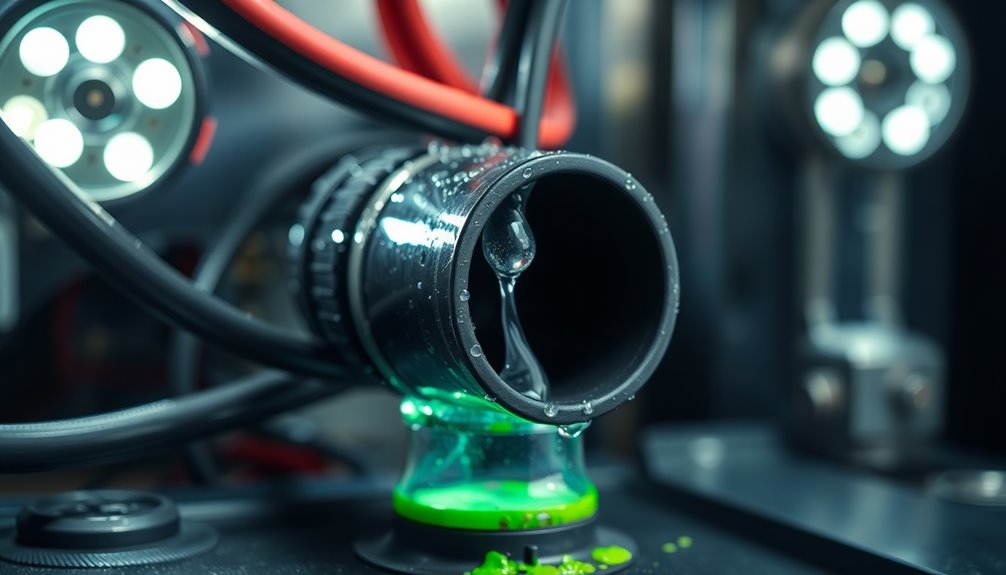
Installing and maintaining a battery vent tube is crucial for ensuring safe operation and prolonging battery life. Start by gathering the necessary tools: a 10mm socket, a 13mm socket, a ratchet, socket extensions, a marker, and scissors.
To access the battery, loosen and remove the hold-down bolts, disconnect the positive and negative cables, and remove any covers. Next, disconnect the old vent hose and remove the old vent tube along with its grommet.
Prepare the new vent tube by trimming it to the correct length, then attach any necessary fittings. Insert the new grommet into the vent port, ensuring it's seated correctly before connecting the new vent tube to the vent port. Route the tube to lead outside the vehicle and secure it to prevent dislodging.
For maintenance, regularly inspect the vent tube for damage or blockages. Clean it as needed and replace it if you notice any leaks. Additionally, be sure to trim the new hose to the required length during installation to ensure proper fitment.
Always monitor your battery's health for signs that ventilation adjustments might be necessary. By following these steps, you'll help ensure your battery remains in good condition and functions safely.
Safety Considerations
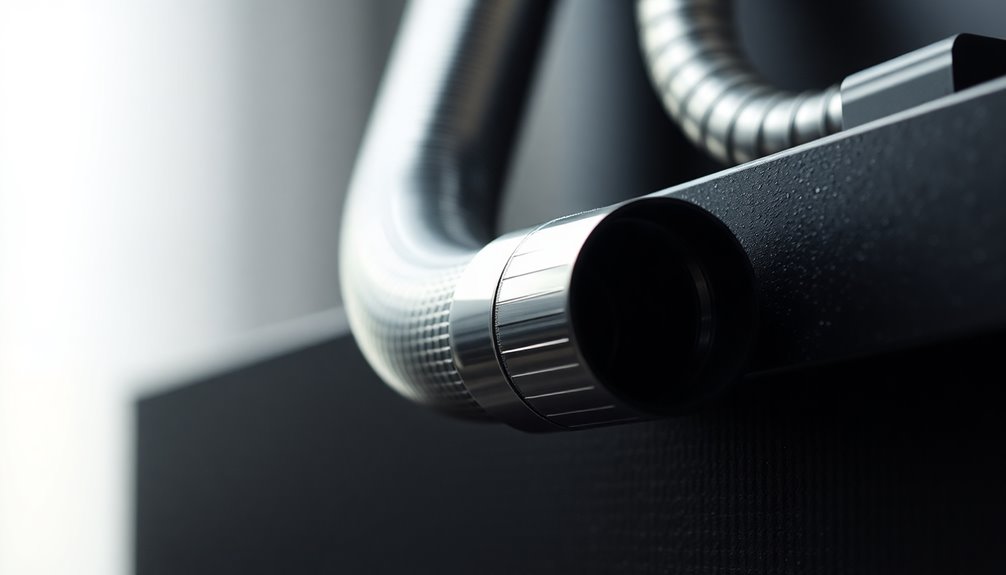
When working with batteries, safety should always be your top priority. Batteries release hydrogen gas during charging and discharging cycles, which is highly flammable and can lead to explosions if ignited. To prevent the buildup of this gas in confined spaces, proper venting is essential. Vent tubes direct gases outside your vehicle, ensuring a safer environment. AGM batteries require venting to reduce the risk of gas buildup in living areas.
You must avoid any fire and explosion risks by keeping sparks, open flames, and smoking away from batteries. During charging, loosen vent caps on conventional batteries to allow gas to escape. Blocked or kinked vent tubes can create dangerous pressure buildup, so inspect them regularly. Overheating can also cause the battery case to rupture, leading to hazardous situations.
Always wear eye protection, gloves, and protective clothing when handling batteries. Keep batteries upright and level to prevent acid spills, and clean any spills immediately with a water and baking soda solution.
Make sure all connections are secure to reduce the risk of sparks. Finally, follow the manufacturer guidelines for your specific battery type to ensure all safety precautions are met. Your diligence can prevent accidents and keep you safe while working with batteries.
Common Questions About Vent Tubes
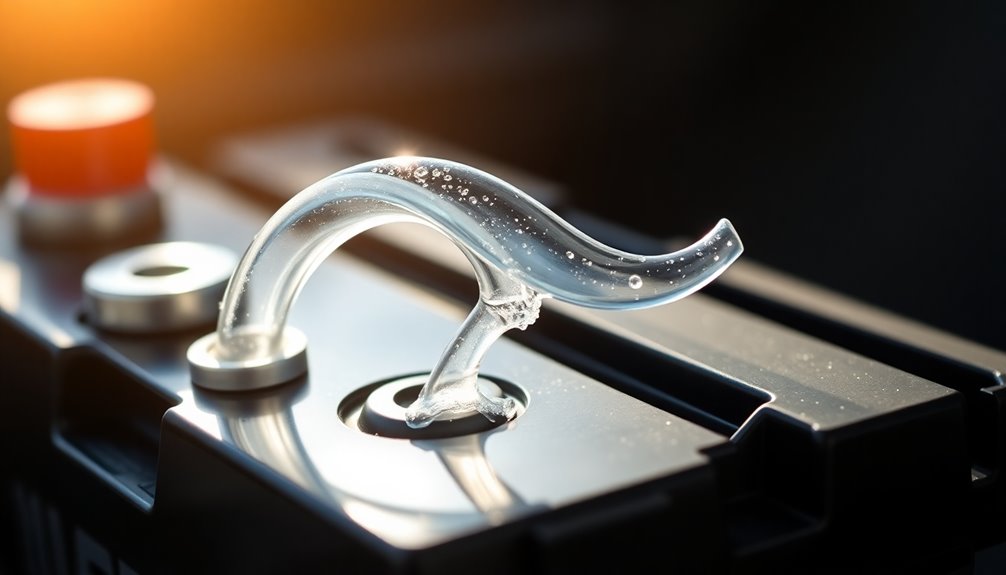
Understanding the function of vent tubes is crucial for anyone handling batteries, as these components play a vital role in safety and performance. You might wonder why vent tubes are necessary. Simply put, they release hydrogen gas produced during charging, preventing dangerous buildup and potential explosions. It's essential to note that all lead-acid automotive batteries typically vent gases.
If you're using flooded batteries, these tubes are essential, while sealed and AGM batteries might still benefit from proper venting in specific conditions.
You may ask, "What happens if the vent tube gets blocked?" A blockage can lead to hydrogen gas accumulation, causing the battery to swell or emit strange odors. It's vital to check the vent tube regularly to avoid these issues.
Also, if you're replacing a battery, ensure the new one is compatible with the existing venting system.
Lastly, consider the location of your battery. Batteries in enclosed spaces need effective venting more than those under the hood, where airflow can help dissipate gases.
Future of Battery Venting Technology

As battery technology evolves, so do the systems designed to manage safety and efficiency. You'll see innovations like dual-stage vent valves and multifunctional units that enhance pressure management, critical for maintaining battery health.
With the integration of sensors and AI, real-time monitoring will alert you to any potential thermal runaway events, significantly reducing risks. Additionally, the demand for advanced venting solutions is rising at 20% annually due to battery fires, highlighting the increasing importance of these technologies.
Self-healing materials and nanotechnology boost valve durability by 25%, while new manufacturing techniques cut production costs by 18%, making advanced valves more accessible.
The global market for these solutions is expanding rapidly, driven by strict safety regulations and a growing electric vehicle sector, which is projected to grow at a CAGR of 21.73% between 2024 and 2050.
You can expect the next generation of venting systems to feature reversible metallic quick venting with multiple functions and high water resistance, suitable for various conditions.
As solid-state batteries emerge, these advanced venting solutions will become even more crucial. Given the commercial EV sector's 70% growth in 2023, the demand for reliable battery components will only increase, ensuring your vehicle remains safe and efficient in the years to come.
Frequently Asked Questions
Can I Use a Battery Without a Vent Tube?
You really shouldn't use a battery without a vent tube.
Without it, hydrogen gas can build up, increasing the risk of explosions and fires. This not only endangers your safety but can also damage the battery itself, leading to swelling or leakage.
Plus, you could face health risks from toxic gas exposure.
It's essential to follow safety regulations and manufacturer guidelines to keep yourself and your vehicle safe.
How Often Should I Replace My Battery Vent Tube?
You should replace your battery vent tube whenever it shows signs of damage or wear, like cracks or brittleness.
If you're installing a new battery, it's a good idea to replace the tube to ensure compatibility.
Regularly inspect the vent tube during maintenance, ideally every 6-12 months.
If you notice swelling, strange odors, or fluid leaks from the battery, consider replacing the vent tube immediately to avoid further issues.
What Materials Are Vent Tubes Typically Made From?
Vent tubes are typically made from high-quality plastic and heat-resistant rubber. The plastic withstands battery vapors and resists chemical degradation, ensuring durability.
Rubber connectors provide a secure seal, preventing leaks while remaining flexible. Some tubes might include UV-resistant materials for added protection against sunlight.
These materials not only enhance longevity but also ensure that the vent tube effectively channels gases away, maintaining a safe and efficient battery environment for your vehicle.
How Do I Know if My Vent Tube Is Blocked?
To know if your vent tube's blocked, start with a visual inspection. Look for kinks, bends, or any debris that might obstruct it.
If you notice your battery's swollen or emitting unusual odors, that's a red flag. Excessive heat or fluid leakage can indicate a blockage too.
Always check that the tube's securely connected and routed outside your vehicle. Regular maintenance can help prevent serious issues down the road.
Are Vent Tubes Universal for All Battery Types?
Vent tubes aren't universal for all battery types.
While lead-acid batteries require them to vent gases, sealed batteries typically don't under normal conditions. However, they might need venting during overcharging.
AGM and lithium-ion batteries also have specific venting needs.
Your battery's location plays a critical role too; batteries in enclosed spaces generally need vent tubes, while those in open areas might not.
Always check manufacturer guidelines to ensure you're following the right recommendations.
Conclusion
In summary, battery vent tubes play a crucial role in maintaining your battery's health by allowing gases to escape, preventing pressure buildup. They're essential for various applications, especially in vehicles, and understanding their function can help you ensure optimal performance. Regular installation and maintenance are vital for safety and efficiency. As technology advances, the future of battery venting looks promising, so staying informed will benefit you and your battery in the long run.

